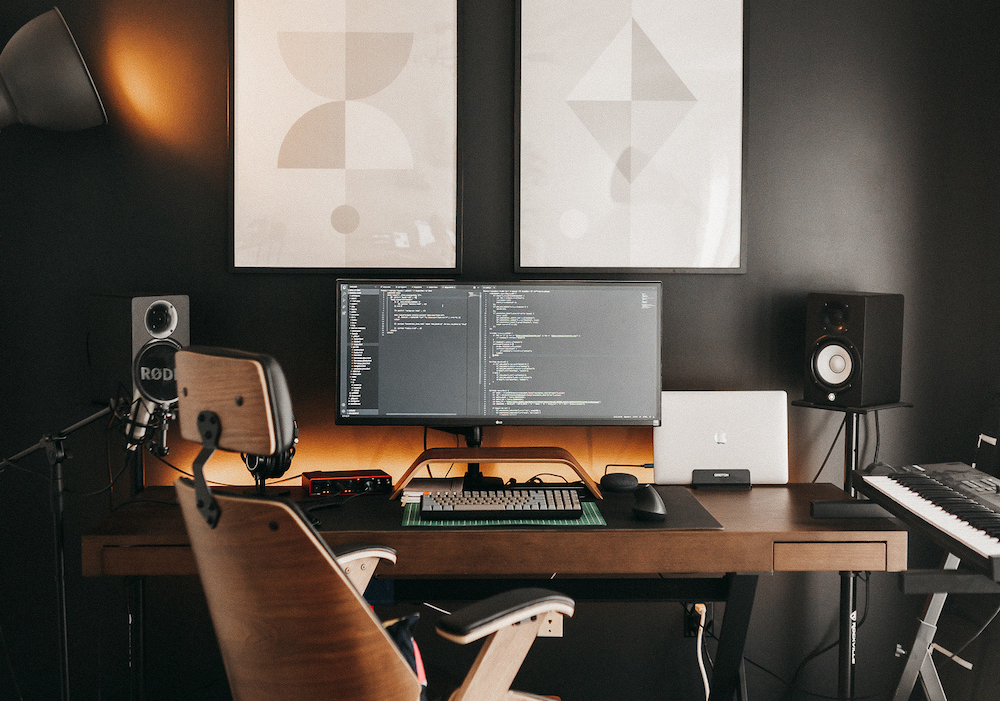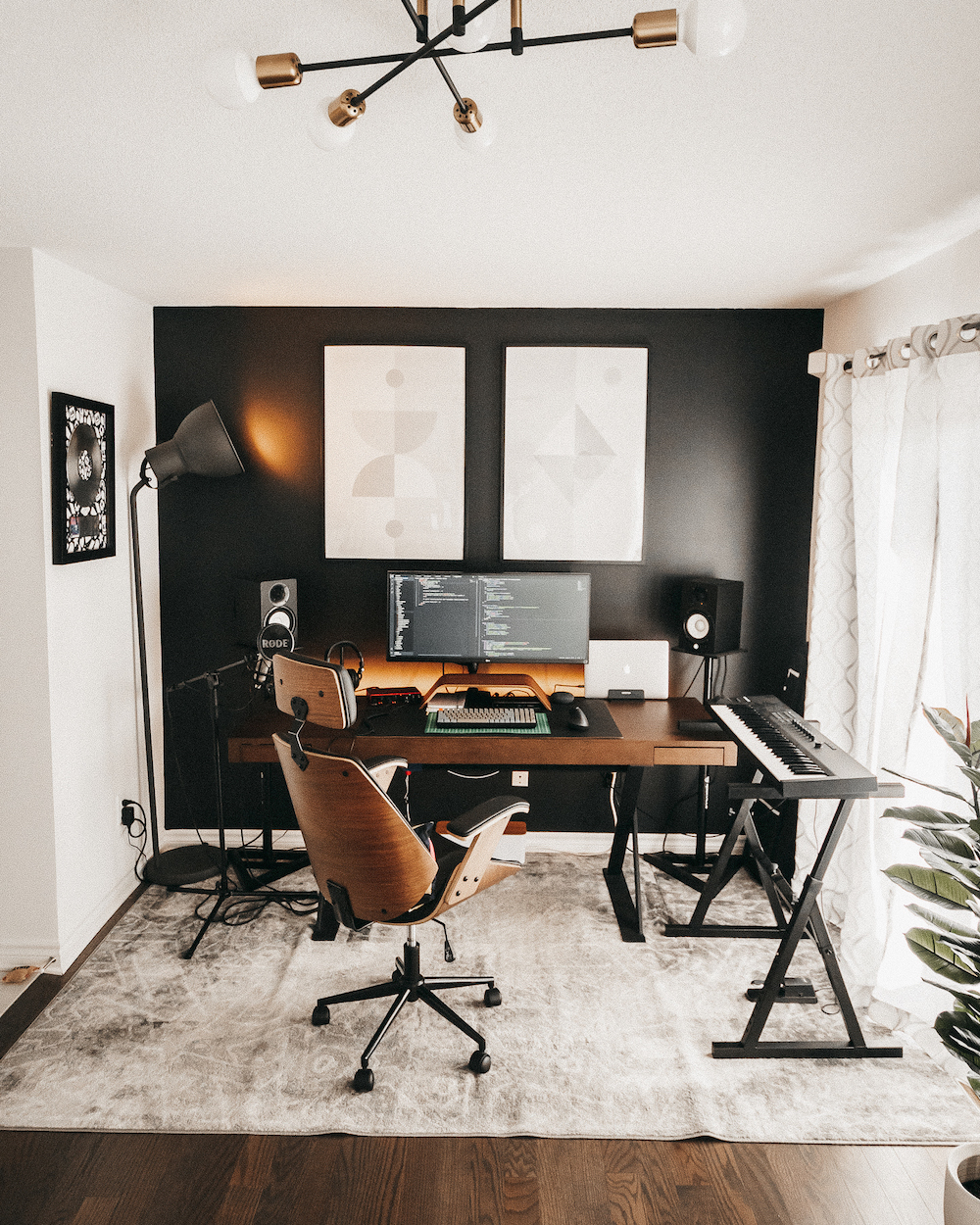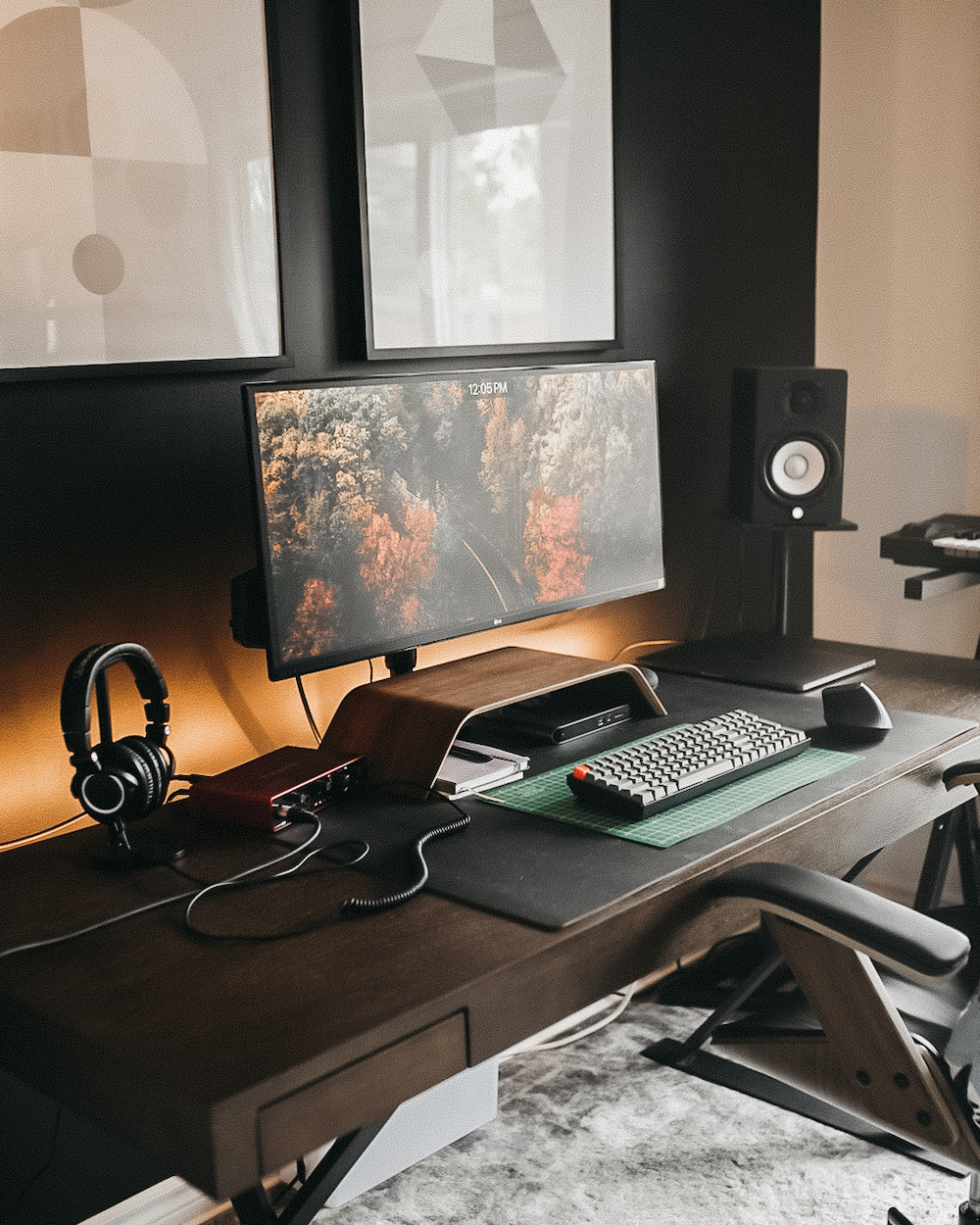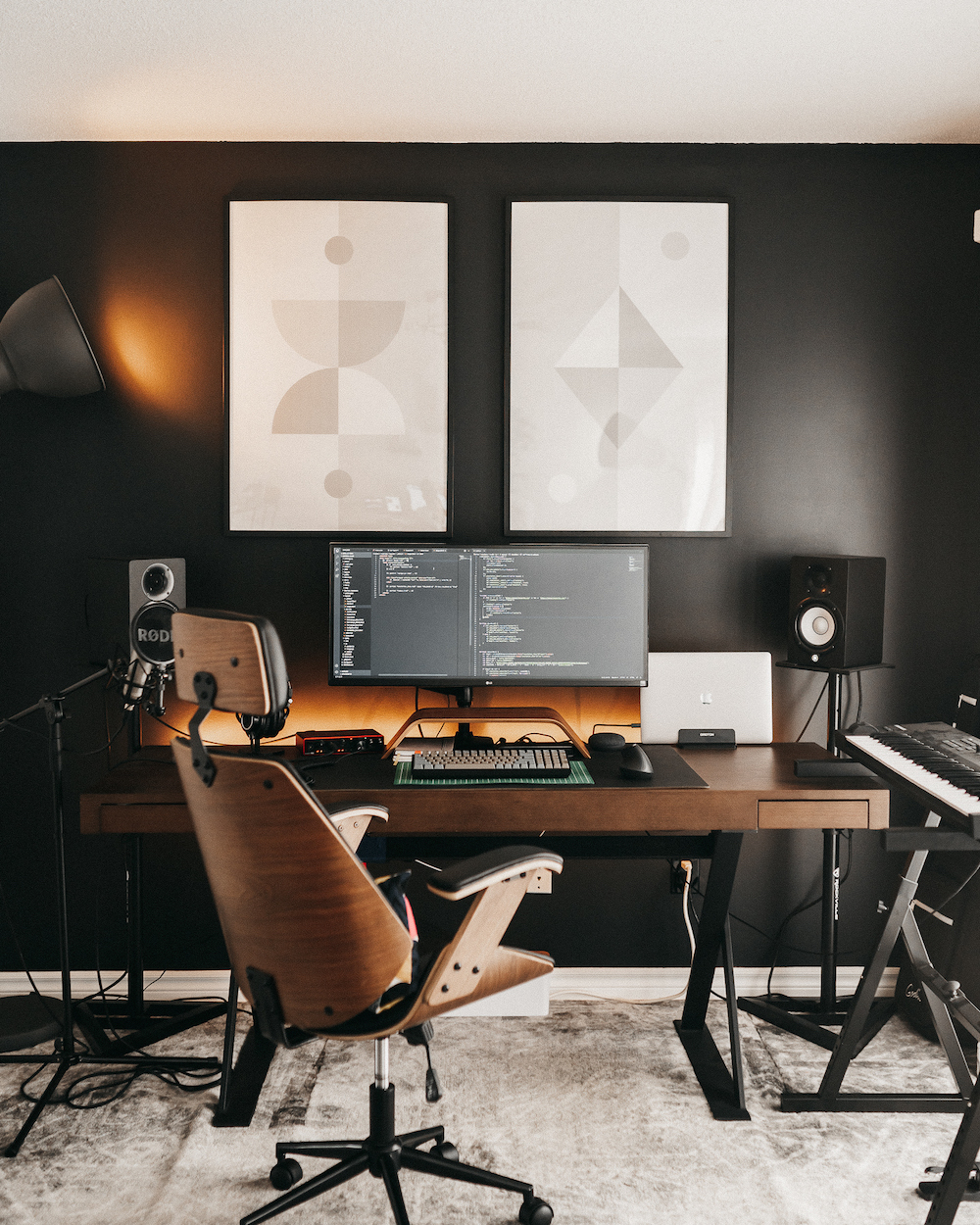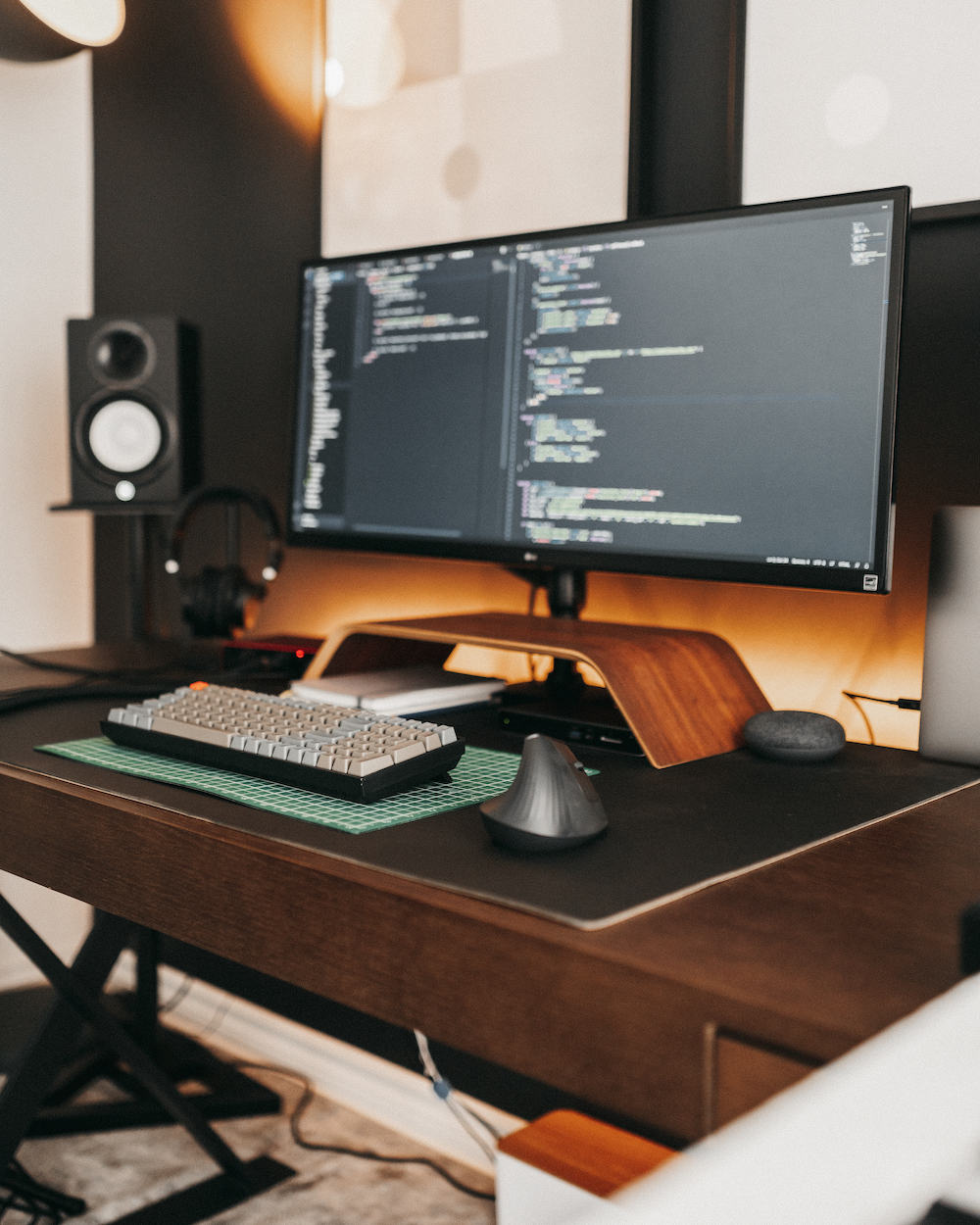When looking for our home I was very adamant about finding a place that served my needs for my work from home day-job, but also my after-hours creative projects like music, design, photography, etc. While I was working from home prior to moving, my drive to create personal work dropped since I was spending my 8-hour working day in the same place as where I would continue to work at night. Much like when your hobbies start to feel like work, you need that separation between projects that are for yourself, and projects that are directed for/by others. That meant, the new home needed to have the space to allow two different workstations either in the same, or different rooms.
I’m extremely grateful that I found a home that allowed for this. The office was large enough to have a dedicated creative setup for my music and hobbies, and still have a dedicated setup for working during the day at Shopify. I know that this is an extreme luxury that most people don’t have, but I think it’s imperative to have different surroundings for your hobbies/day-job. Whether it’s separate workspaces, different rooms, or just bringing your laptop to a kitchen table to get your work done during the day and then returning to the place where you get your hobbies done after hours will go a long way to preventing burn out and being drained creatively.
With that being said, I started designing this office to further create that divide between work and play. I modeled my office in a 3D environment so I could check that all the stuff I needed would fit properly.
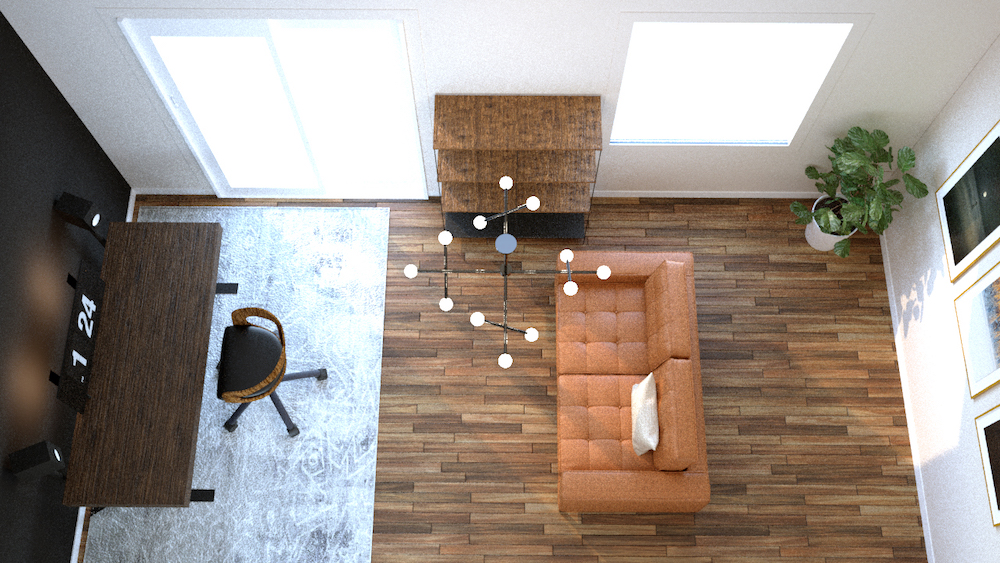 3D render of my office used for planning
3D render of my office used for planning
I tried out painting various walls, different setups, and locations, but in the end, I made the decision to paint the one wall behind my music desk black, so the atmosphere of one side of the office is entirely different from the other side. The black color was chosen mindfully because I wanted my surroundings to fade away into the darkness and let my creativity flow out onto whatever I was working on.
Everything I use to make music is within reach so that I never have to take anything down or set anything up which could cause a break in productivity. The keyboard on the side makes it easy to turn and start composing something while the microphone is ready on a stand to the left of the desk. Everything is routed together using a Belkin thunderbolt system, and a Focusrite 8i6 audio interface. This means that everything that I have to plug into my computer (i.e Monitor, Mic, Speakers, Headphones, Keyboard, Mouse, Midi Keyboard, Hard drives, etc) is all plugged in via one cable. Talk about efficiency! I have a full list of my hardware and peripherals down below.
My chair and desk were chosen purely based on aesthetics, however, the size of my desk was a big deciding factor. I needed something with a lot of space to put headphones, notebooks, an audio interface, and a thunderbolt system. Being mindful of the real estate you have to work with, and what requirements you have for them will go a long way in helping make a decision on desk sizes.
Studio Peripherals
Chair
Cove from Structube
Desk
Tokyo from Structube
Display
34" UltraWide from LG
Keyboard
K4 Wireless Mechanical Keyboard from Keychron
Mouse
MX Vertical from Logitech
Thunderbolt Dock
Thunderbolt Dock 3 Pro from Belkin
Monitor Stand
Walnut wood monitor stand from Grovemade
Desk Pad
Matte black leather desk pad from Grovemade
Music Production
Audio Interface
Scarlett 8i6 from Focusrite
Studio Monitors
HS5s from Yamaha
Headphones
ATH-M50x from Audio-Technica
Microphone
NT1A from Rode
Midi Keyboarad
Komplete Kontrol A61 from Native Instruments
Interested in the prints on the wall?

Time
$45 CAD

Days to Come
$45 CAD
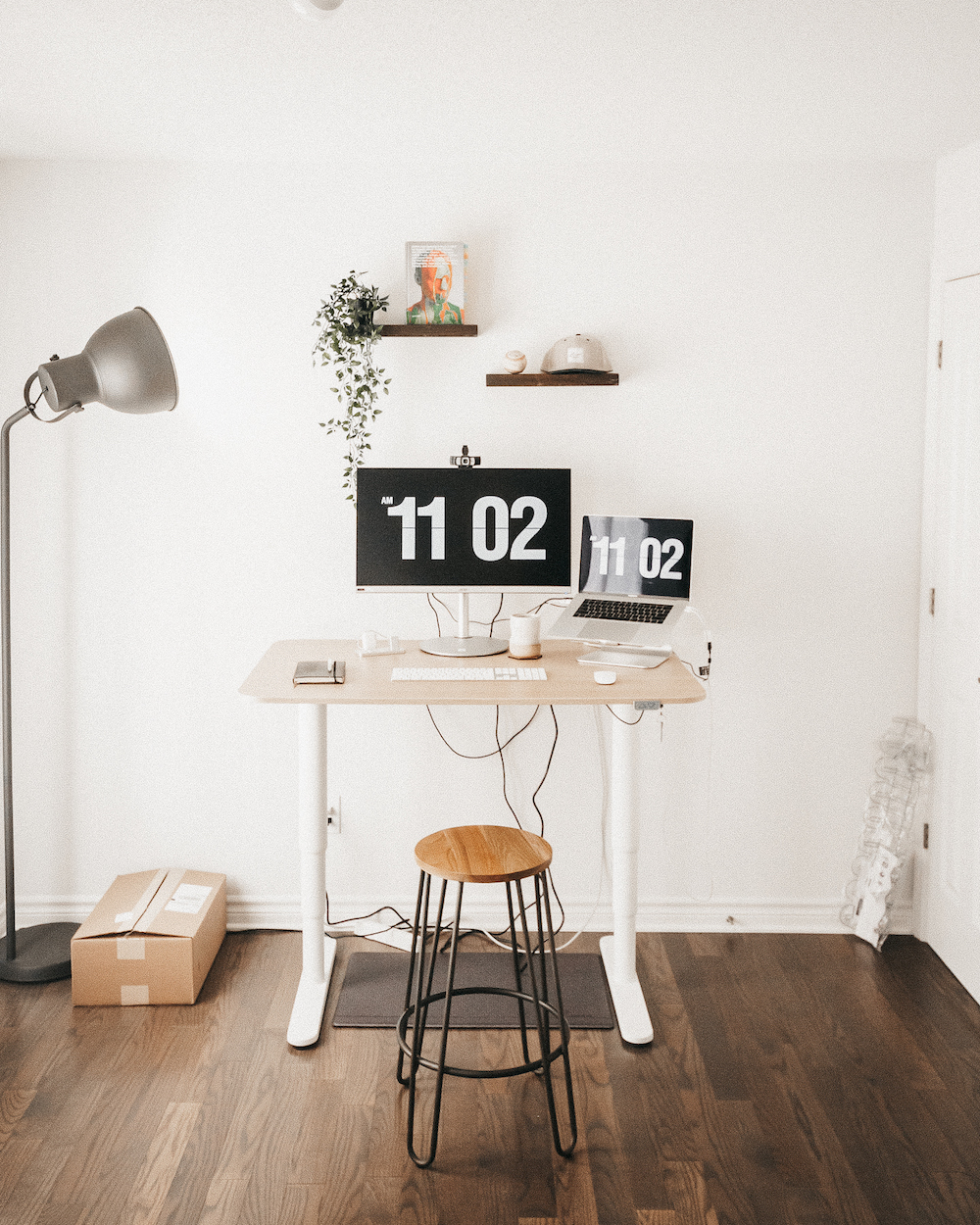 My workspace setup for Shopify work
My workspace setup for Shopify work
Moving on to my Shopify daytime workstation, it’s entirely different. The desk is a lot smaller and has standing capabilities so I’m not sitting the entire day. The wall is white, and the surrounding area is very plain. It was designed so that the minimal workspace was free of distractions and clutter. The walls were also kept plain white to aid in lighting for video calls seeing as though all my meetings are virtual now. Please ignore the bad cable management as I have yet to install the cable management rack that’s sitting in the right corner.
There is still more to do, and there always will be. You should be constantly iterating your space and evaluating if the things you have around you are still helpful in getting your work done. We’ll be moving the living room loveseat into my office once our couch is delivered, and I have plans to set up a pegboard wall for all my gear and tools, to replace my shelving unit.
At the end of the day, designing a creative space is a very personal thing. It’s imperative to add little touchpoints that put you in the right headspace for each element of your work that you do. The mental state is where you should start your planning. Look back on times you’ve been most creative, and ask yourself “What made that moment special”? Was it the lighting? The atmosphere, or the tools you had available? When you find the answer to questions like those, you’ll have a better idea of where to begin.
Work Peripherals
Desk
Bekant, white stained oak / white from IKEA
Stool
Lars from Structube
Monitor
28" 4K ZeroFrame CB2 from Acer
Keyboard
Magic Keyboard with numeric keypad from Apple
Mouse
Magic Mouse from Apple
